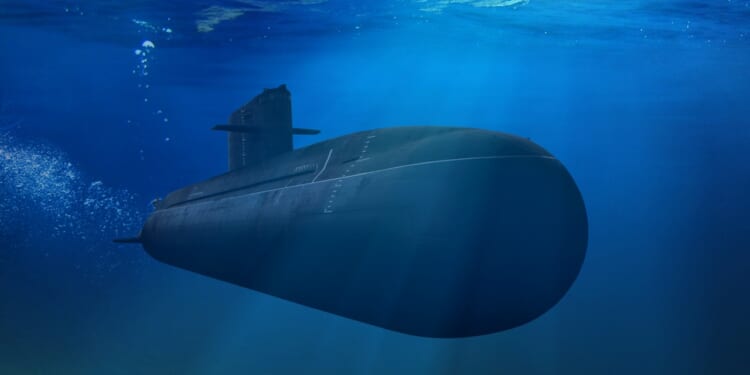According to news reports, a Cyprus-based company bought advanced sonar detection equipment from the West—then transferred it to Russia for use in the Arctic.
The West continues to be its own worst enemy when it comes to dealing with its enemies. Essentially, the United States and its Western partners value openness in their affairs. It’s how the West became so fabulously wealthy. Many assume this is how the West became technologically advanced as quickly as it did, too.
Yet, there are many downsides. Notably, America’s erstwhile rivals, notably in China and Russia, routinely exploit that openness for their own gain. Indeed, China’s entire rise as an industrial behemoth is the result of a vast and ongoing industrial espionage program aimed at America.
Russia Steals Sensitive US Equipment, Too
Now, The Washington Post is reporting something similar has transpired with the Russians. While China’s espionage is comprehensive, Russia’s is more focused. In this case, the Russians gained access to sensitive Western technology to build their advanced “Harmony” undersea sensor grid—which is today used by the Russian Navy to defend the passes into Russia’s most sensitive nuclear submarine bases in the Arctic.
Harmony supposedly forms a semicircular detection barrier that ranges from Murmansk to Franz Josef Land. This serves as a sort of tripwire zone for detecting NATO submarines operating near Russia’s sea-based nuclear weapons deterrent. The Harmony system consists of seabed sonar arrays, undersea drones, fiber optic cables, and communication antennas to detect approaching US and NATO submarines.
The importance of a sea-based nuclear weapons capability is what Russia is protecting. It’s an important facet of a nation’s nuclear weapons deterrent because sea-based nuclear missiles (submarine-launched) act as a second-strike capability. In other words, the sea-based leg of a nation’s nuclear triad allows for a country under attack by another nuclear power to launch nuclear missiles even after a devastating first strike on its land-based silos.
Harmony is part of Russia’s Bastion Defense (anti-access/area-denial, or A2/AD) strategy for the Kola Peninsula region.
How Did Russia Get Its Hands on Western Detection Tech?
According to The Washington Post, a Cyprus-based firm, Mostrello Commercial Ltd., acted as a shell company for Russia’s defense sector. Mostrello went on to purchase high-end maritime gear, such as sonar systems, subsurface antennas, fiber optic cabling, underwater drones capable of operating at depths up to 3,000 meters, and seabed positioning systems.
Mostrello purchased key systems from a range of suppliers in the United States, the United Kingdom, Norway, Sweden, Italy, and other NATO states. Supposedly, Mostrello’s real client was a Moscow-based firm called Upraveline Perspektivnyh Tecknologii (UPT) that deals primarily with Russian intelligence agencies, such as the FSB and SVR.
About Russia’s “Harmony” Submarine Detection System
With their Western-sourced Harmony system, the Russian Navy can track and evade any American subs shadowing their nuclear ballistic submarines operating in the Arctic. This negates a key advantage the Americans have long enjoyed.
Basically, in the event of a crisis, the United States Navy always knew it could rely on its stealthy submarines to sneak into Russian territory and monitor the operations of Russian nuclear submarines to gauge their intentions. The Harmony detection system makes the US submarine force’s mission to conduct covert surveillance on Russian assets nearly impossible.
The Russians are keen on keeping Americans and NATO out of the Arctic, which they view as theirs. Along with the establishment of Russia’s advanced Harmony system in the Arctic comes the introduction of advanced Yasen-class attack submarines and Borei-class SSBNs. Without the ability to closely monitor these advanced—lethal—Russian submarines, US deterrence is dead.
What’s more, the Washington Post report highlights the utterly abysmal nature in which the United States has protected its technological secrets from its rivals. But perhaps there’s something more nefarious going on.
After all, America’s political corruption is at epidemic levels in both parties, with elected leaders and other influential government officials attempting to cash-in from their government careers.
In an odd footnote to the story, the Washington Post report indicates that Mostrello’s offices in Cyprus were headquartered in the same building as Burisma, the Ukrainian energy giant said to have been instrumental in Hunter Biden’s corrupt exploits in Ukraine. It is hard to see this being more than a coincidence—but it is an interesting one.
About the Author: Brandon J. Weichert
Brandon J. Weichert is a senior national security editor at The National Interest. Recently, Weichert became the host of The National Security Hour on America Outloud News and iHeartRadio, where he discusses national security policy every Wednesday at 8pm Eastern. He is also a contributor at Popular Mechanics and has consulted regularly with various government institutions and private organizations on geopolitical issues. Weichert’s writings have appeared in multiple publications, including The Washington Times, National Review, The American Spectator, MSN, The Asia Times, and others. His books include Winning Space: How America Remains a Superpower, Biohacked: China’s Race to Control Life, and The Shadow War: Iran’s Quest for Supremacy. His newest book, A Disaster of Our Own Making: How the West Lost Ukraine is available for purchase wherever books are sold. He can be followed via Twitter @WeTheBrandon.
Image: Shutterstock / zieusin.


















